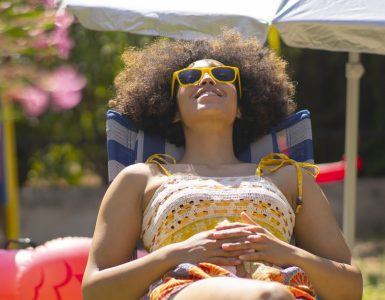Now that the summer is really heating up, you should definitely make sure that you are stocked up on sunscreen. Choosing a sunscreen from an aisle of countless options with confusing labels and claims can seem like an overwhelming task. Here is the key information that you need to know to help you ensure maximum protection from the sun’s powerful rays.
What is ultraviolet radiation?
Ultraviolet radiation is emitted from the sun. There are two types of ultraviolet radiation that can cause damage to the skin: UVA and UVB. UVA rays aren’t absorbed by the ozone layer and penetrate deep into the skin; they are known to contribute to premature aging and skin cancer. UVB rays are partially absorbed by the ozone layer and are the main cause of sunburn. Be sure to choose a sunscreen that provides protection against UVA and UVB rays.
What should I look for on the sunscreen label?
Sun Protection Factor (SPF): Sun protection factor refers to the amount of sunburn protection that a sunscreen can provide to the average user. Pick a sunscreen with a SPF of at least 30 and be sure to reapply it at least every two hours, as well as after swimming or sweating. SPF only refers to protection against UVB rays.
Broad spectrum: Sunscreens that are “broad spectrum” protect against UVB and UVA rays. Since both types of rays can damage your skin and contribute to skin cancer, make sure that you choose a sunscreen that has the “broad spectrum” label.
Water resistant: Water-resistant sunscreens are ideal if you plan to do water activities or other activities where you may sweat. If a sunscreen bottle has the label “water resistant,” check to see how long the resistance lasts. No sunscreens are waterproof, and they must be reapplied at least every two hours.
Other important tips:
- When should you apply sunscreen? Slather on the sunscreen at least 30 minutes before spending time outdoors.
- How much should you use? It can be easy to underestimate how much you need to cover your whole body. A good estimate for the amount is roughly the size of a golf ball.
- What else should you do to protect my skin from the sun? Sunscreen doesn’t provide 100% protection against all UV rays. You should also use other protective measures such as limiting the amount of time spent in the sun and covering up your skin by wearing a wide-brimmed hat, light/loose clothing (so that you still get some cover from the sun, but don’t get too hot), and sunglasses to protect your eyes.
For Health Advocate members
If you’re a Health Advocate member with access to the wellness coaching component of our Wellness Program, reach out to your coach for more information on sun safety.



